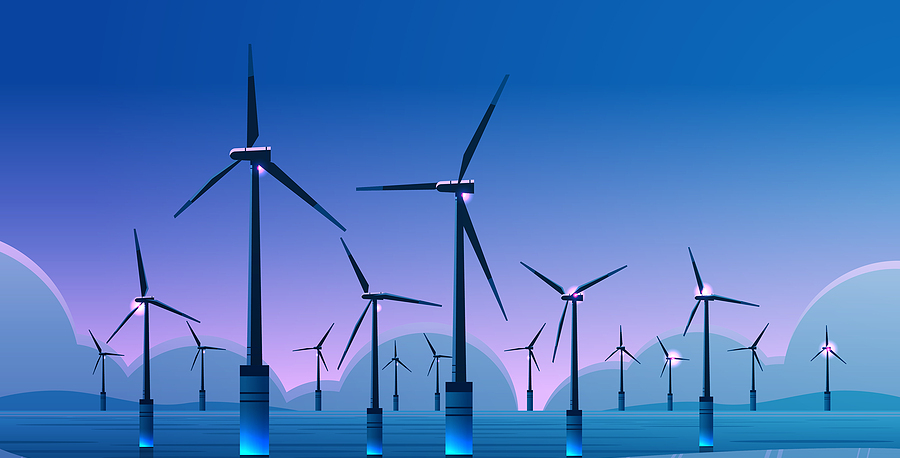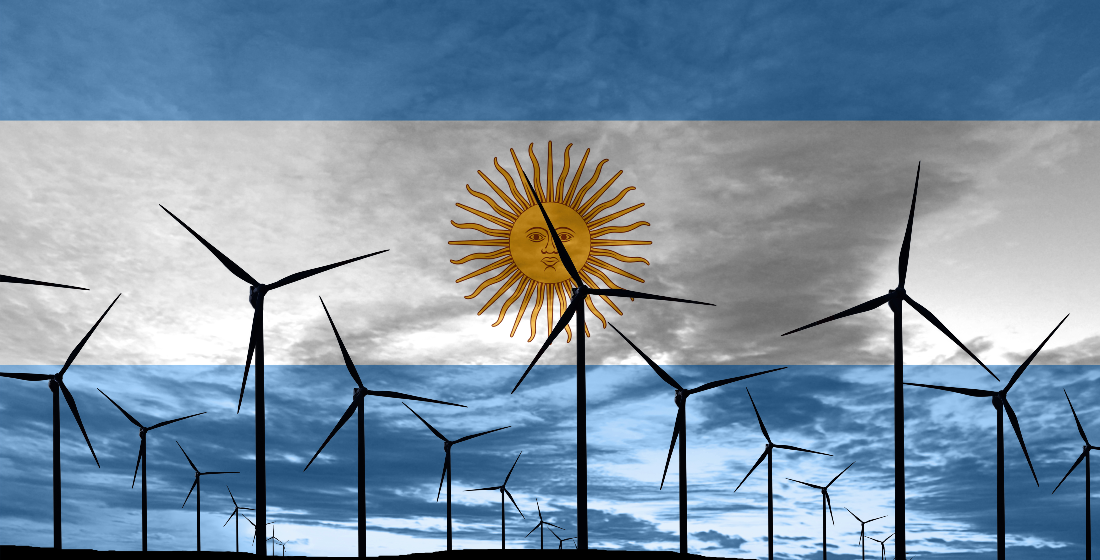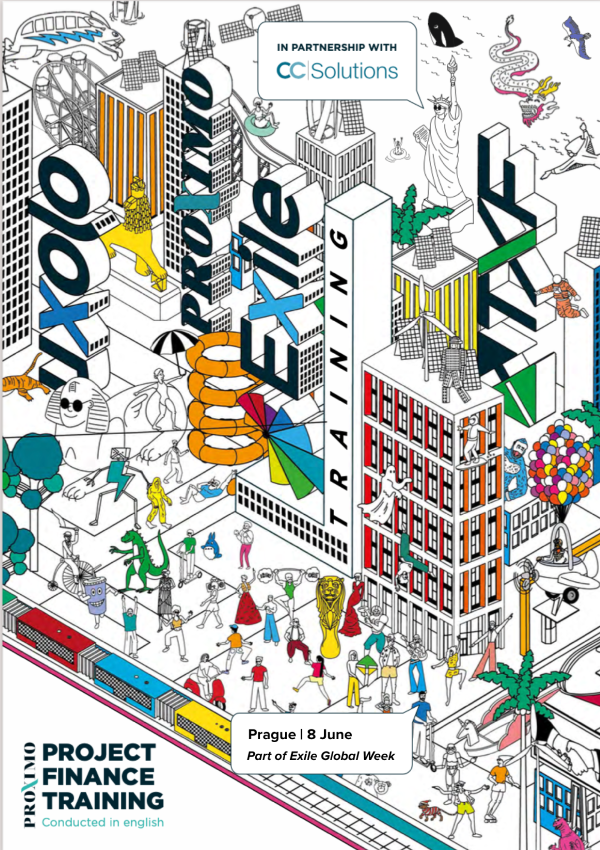US offshore wind industry: A current outlook
The project finance team at Cahill Gordon & Reindel LLP provide insight on the current state of the US offshore wind energy industry, highlighting several projects currently operating or in development, and their thoughts on how the offshore wind market will develop over the next several years. By Emeka Charles Chinwuba (partner), John Chtchekine (associate) and Charlotte Rehfuss (associate).

According to the US Department of Energy’s Office of Energy Efficiency & Renewable Energy, the offshore wind energy project pipeline in the United States has currently reached a total of 40GW of capacity – that includes the operational 30MW Block Island Wind Farm in Rhode Island and the 12MW Coastal Virginia Offshore Wind pilot project.[1]
The Biden administration announced in March 2021 its goal of installing 30GW of offshore wind capacity by 2030 and according to the White House, this would provide electricity for 10 million homes in the US every year.[2] It is also forecast that in meeting this 30GW goal, the US economy could see offshore wind investments reaching in excess of $110 billion by 2030, supporting the creation of 80,000 jobs annually by 2035.[3]
Offshore wind is generally considered stronger and more consistent than onshore wind and has the potential to provide more than 2,000GW of energy per year, which would constitute a significant portion of the energy needs of the US.
The Biden administration's target is ambitious for a nascent industry in a country that has lagged behind its global counterparts. The US currently has just seven wind turbines offshore in the Atlantic Ocean (i.e. off the coast of Rhode Island and Virginia) while Europe, by contrast, has more than 5,000 wind turbines in the Atlantic Ocean.[4]
While there are significant development challenges for offshore wind projects in the US, including unique planning, siting and permitting issues, there still remains keen interest from developers particularly due to the superior wind resources in US coastal areas and the proximity to population centers. To overcome the developmental challenges, the Biden administration is taking coordinated steps to support rapid offshore wind deployment through advancing ambitious renewable energy targets and offshore wind projects, investing in infrastructure to strengthen the domestic supply chain, and supporting critical research and development.[5]
Overview of the US offshore wind energy market
In April 2021, the US set an ambitious climate target of reaching a 50% reduction in greenhouse gas emissions by 2030, and net-zero carbon emissions by 2050, a 100% carbon pollution-free power sector by 2035. To reach these climate goals along with the 30GW of offshore wind capacity goal referred to above, the Department of Energy (DOE) and many state governments have shown an increased appetite for offshore wind energy. Equally important is that the costs associated with offshore wind energy project development have declined significantly in the last decade. Experts project that, within a few years, offshore wind will become more competitive with conventional sources of power.
The offshore wind industry in Europe is considerably more advanced with an overall generation capacity of more than 25GW. Due to the abundance of wind energy resources and limited availability of land across Europe, many European governments had already developed supportive policies to drive the utilisation of offshore wind energy resources since the early 2000s.
Over the past three decades, European countries have coordinated across national boundaries to integrate offshore wind energy into the grid and have cooperated to reduce environmental impacts, standardize interfaces and technologies, as well as create interconnecting offshore wind clusters. In 2020 for example, more than $31.7 billion of investments were made in new offshore wind assets in Europe and they have built the expertise, supply chains and workforce to support this burgeoning industry.[6]
The development of the offshore wind industry in the US has been very slow compared to Europe due, in part, to the comparative cost of developing offshore wind versus onshore wind projects but also as a result of stakeholder opposition and litigation, protracted permitting, complex regulatory frameworks, and lingering adverse impacts of the COVID-19 pandemic.
The Block Island Wind Farm, located off the coast of Rhode Island, was the first operational commercial offshore wind farm in the US. It was developed and completed in 2016 by Deepwater Wind, subsequently acquired by Ørsted A/S, and features five wind turbines each generating 6MW.
The second operational project (which happens to be the first in Federal waters) is the pilot phase of the Coastal Virginia Offshore Wind (CVOW) farm located off the coast of Virginia developed by Dominion Energy and the Virginia Department of Mines, Minerals, and Energy (DMME). The project is a two turbine 12MW demonstration plant, which is to be followed by a second phase of up to 2.6GW and 176 wind turbines. Construction and installation of this pilot phase was completed as of June 2020 and the project became fully operational by the autumn of 2020.
The above notwithstanding, there are 16 offshore wind projects at various stages of development with a projected pipeline of 30GW in federal lease areas issued to date, as represented in the table below:
Atlantic Coast
No. | Project Name | Developer | Receiving State | Capacity | Projected Completion | Current Status |
1 | Coastal Virginia Offshore Wind (Commercial) | Dominion Energy | Virginia | 2,640 MW | 2026 | BOEM permitting phase |
2 | Kitty Hawk Wind | Avangrid Renewables | North Carolina | 88 MW (for phase 1 & 2500 MW in total) | 2026 | BOEM permitting phase |
3 | SouthCoast Wind (formerly Mayflower Wind) | Shell New Energies Ocean Winds | Massachusetts | 2,400 MW (in 2 phases) | 2028 | BOEM permitting phase |
4 | Atlantic Shores | Shell New Energies EDF Renewables | New Jersey | 1,510 MW | 2028 | BOEM permitting phase |
5 | Commonwealth Wind | Avangrid Renewables | Massachusetts | 1,232 MW | 2028 | BOEM permitting phase |
6 | Ocean Wind 2 | Ørsted | New Jersey | 1,148 MW | 2027 | BOEM permitting phase |
7 | Ocean Wind 1 | Ørsted and PSEG | New Jersey | 1,100 MW | 2024 | BOEM permitting phase |
8 | Skipjack | Ørsted | Maryland | 966 | 2026 | BOEM permitting phase |
9 | Sunrise Wind | Ørsted, Eversource Energy, Con Edison, and New York Power Authority | New York | 880 MW | 2024 | BOEM permitting phase |
10 | Empire Wind | Equinor ASA and BP | New York | 816 MW | 2026 | BOEM permitting phase |
11 | Vineyard Wind 1 | Avangrid Copenhagen Infrastructure Partners | Massachusetts | 800 MW | 2023 | Under construction |
12 | Park City Wind | Avangrid Copenhagen Infrastructure Partners | Connecticut | 804 MW | 2025 | BOEM permitting phase |
13 | Revolution Wind | Ørsted, Eversource Energy, National Grid, and United Illuminating | Rhode Island Connecticut | 700 MW | 2025 | BOEM permitting phase |
14 | MarWin | US Wind | Maryland | 300 MW | 2025 | BOEM permitting phase |
15 | South Fork | Ørsted, Eversource Energy, Long Island Power Authority | Rhode Island New York | 132 MW | 2023 | Under construction |
The Kitty Hawk Wind, SouthCoast Wind, Atlantic Shores, Commonwealth Wind, Ocean Wind 2, Ocean Wind 1, Sunrise Wind, Empire Wind, Park City Wind, Revolution Wind, MarWin and the commercial phase of Coastal Virginia Offshore Wind projects are each in a similar stage of acquiring the necessary federal approvals and permits from the Bureau of Ocean Energy Management (BOEM) to commence construction.
In addition to ongoing environmental reviews by BOEM, each project’s Construction and Operations Plan has been submitted and is under consideration by BOEM. The Skipjack project’s sponsors have already submitted a Construction and Operations plan; however BOEM is yet to issue a Notice of Intent to begin its environmental review of the project. Vineyard Wind 1 and South Fork, on the other hand, have already received the necessary final permits and approvals and, construction on both projects has already commenced as indicated above.
Great Lakes
No. | Project Name | Developer | Receiving State | Capacity | Projected Completion | Current Status |
16 | Icebreaker Wind | Lake Erie Energy Development Corporation and Cleveland Public Power | Ohio | 20.7 MW | 2026 | Permitting process complete |
Pacific and Gulf of Mexico Coast
In October 2021, the Biden administration approved the initiation of mapping out potential lease areas along the Pacific and Gulf of Mexico coasts resulting in five areas off the coast of California being defined for lease. These designated areas were auctioned in December 2022 for a total of $757 million to RWE Offshore Wind Holdings, California North Floating, Equinor Wind US, Central California Offshore Wind and Invernergy California Offshore respectively.[7]
The Q4 2022 AWEA Market Report[8] indicates that offshore wind will contribute a significant portion of the clean power pipeline across several states in the near future. New York leads states with 4,230MW of offshore wind power in development, followed by New Jersey (3,758MW), Massachusetts (3,242MW) and Virginia (2,640MW). Furthermore, there is 16,696MW of offshore wind energy in advanced development, only lagging behind solar projects, which account for 54,787MW in advanced development. According to a report from the American Clean Power Association, East Coast states have recently committed to build 25GW of offshore wind capacity by 2035.
While BOEM is responsible for offshore wind development, including lease sales, easements, rights of way in federal waters, leases may also be issued by states where the proposed lease area is located within 3 nautical miles of such state's coastline. The leases are usually awarded through a competitive auction process; however, it is also possible for leases to be issued on a non-competitive solicitation basis. Once issued, the lease grants the lessee the right to prepare plans for the development of the leased area, which must be approved by BOEM. A lessee must progress through a Planning and Environmental Review process requiring the lessee to prepare and submit a Site Assessment Plan (SAP) and a Construction and Operations Plan (COP) for review and approval by BOEM. If approved, the lessee will then submit both a Facility Design Report (FDR) and a Fabrication & Installation Report (FIR) to BOEM. An FDR details the design of all the major components of the project, and a FIR describes the fabrication and installation plans for the equipment. If BOEM finds the submissions satisfactory, it will issue a "No Objection Determination" upon the receipt of which the lessee may proceed to commence construction.
A significant majority of the projects being developed or earmarked for development are located on the US east coast, while only a handful of project sites have been identified on the west coast. This is due to the varying topological characteristics present on the east and west coasts. The continental shelf off the east coast has a gentle slope into the sea, which results in shallow waters along the east coast, making it possible for wind turbines to be installed and bolted to the seabed. However, the continental shelf off the west coast plunges steeply into the sea resulting in deeper waters along the west coast, making installation of "Bottom Fixed" wind turbines more difficult, costly, and not economically viable. The only available way to harness the huge offshore wind energy potential from the Pacific is to install floating offshore wind energy turbines. The Floating Offshore Wind (FOW) is a fast growing technology as the turbines can be placed almost anywhere where water is deeper than 60 meters, thereby opening up new sites to offshore wind development.[9] In the US, the state of Maine has approved a pilot project for the development of the first FOW project to be developed by a consortium led by the University of Maine's Advanced Structures and Composites Center. The pilot project, referred to as Aqua Ventus Maine, is designed to test a floating platform that holds a 11MW turbine, located over 12 miles off the coast of Maine.
Policies driving offshore wind
In order to facilitate rapid development of the offshore wind energy industry, it is imperative that the right government policies are put in place. While the policy and governing framework for offshore wind in the US are generally prescribed at all levels of government, the key drivers for the growth in the sector are the policies being established by various state governments that stand to gain huge socioeconomic benefits from harnessing their surrounding offshore wind energy resources. At the federal level, in addition to BOEM’s role mentioned above, the US Bureau of Safety and Environmental Enforcement (BSEE) is responsible for offshore wind safety and environmental enforcement, the National Oceanic and Atmospheric Administration (NOAA) and the US Fish and Wildlife Service regulate impacts on certain protected species, while the US Army Corps of Engineers oversees any obstructions to navigation and all permits for projects in the Great Lakes under the Rivers and Harbors Act. The states play a key role with the regional transmission organisations (RTOs) and independent system operators (ISOs) that operate electric grids and have a regulatory role under the Coastal Zone Management Act to ensure projects are consistent with state coastal zone management programs and rules.
State government policies
States create a market for offshore wind energy by establishing state renewable energy goals and specific offshore wind targets for utilities within the state. More than half the states in the US, the District of Columbia and three US territories have established renewable portfolio standards (RPS) or clean energy standards (CES), and several states have specifically established targets for offshore wind.[10] In New York, the CES passed in 2019 mandates 9,000 MW of offshore wind energy by 2035 and seeks to secure 70% of the state’s electricity from renewable energy by 2030.[11] Governor Kathy Hochul has taken steps to advance the offshore wind industry in New York, approving a transmission line for Sunrise Wind Farm, which would be the largest offshore wind farm connected to New York’s electric grid, with the potential capacity to power nearly 600,000 homes.[12] Similarly in New Jersey, Governor Phil Murphy, by Executive Order No. 307, expanded the state’s offshore wind energy target from 7,500 MW by 2035 to 11,000 MW by 2040 along with a plan for renewables to meet 100% of the state’s energy needs by 2050.[13] In June 2020, Governor Murphy also released plans to develop the first American port solely dedicated to servicing the offshore wind industry for which construction was commenced in late 2021, and in January 2023, announced plans for the lease of 35 acres of land at the New Jersey Wind Port for an offshore wind project expected to generate enough energy to power more than 700,000 homes.[14] Other states along the US east coast have also put forth similar offshore wind targets (i.e. Massachusetts – 5,600 MW, Connecticut – 2000 MW and Virginia- 5,200 MW), usually backed by necessary executive action or legislation, all of which have resulted in the current pipeline of offshore wind energy projects under development as shown in the table above.
A good example of an ongoing project that is the result of state government policy is the 800 MW Vineyard Offshore Wind Project which was a direct result of the 2016 Act to Promote Energy Diversity under which Massachusetts requires utilities in the state to procure 1.6 GW of offshore wind power by 2027. Furthermore, Massachusetts already had existing coastal infrastructure such as the New Bedford Marine Commerce Terminal, a $113 million facility, which was built specifically for the construction, assembly, and deployment of offshore wind turbines. The governor also negotiated and signed a $6 million per annum lease with Vineyard Wind to enable them to use the terminal for staging and construction of offshore wind turbines before shipping them to the offshore project site. Such supportive policies and operating environment are essential in encouraging project developers to invest and develop offshore wind energy projects in the US.
There has also been an increased push by states to collaborate in establishing regional economic hubs such as the Southeast and Mid-Atlantic Regional Transformative Partnership for Offshore Wind Energy Resources. This regional economic hub was formed by Maryland, Virginia and North Carolina to build a more auspicious investment environment for offshore wind projects. The purpose of this alliance is to promote interstate coordination, streamline state requirements and share best practices to reduce administrative burdens on, and project costs borne by, sponsors and developers.[15]
Federal government policies
To complement state government policies, the federal government plays a significant role in the development of offshore wind particularly in the area of research and development. Under the Department of Energy’s (DOE) Advanced Offshore Wind Demonstration Project program, the federal government has been able to sponsor two offshore wind energy projects: the Lake Erie Energy Development Corporation (LEEDCo) Icebreaker project, located in the Great Lakes, and the Aqua Ventus I project located in Maine and spearheaded by the University of Maine.[16] The LEEDCo Icebreaker project was awarded a $40 million DOE construction grant and will use the innovative Mono Bucket as the turbine foundation - a technology that is projected to reduce both costs and environmental impacts for the offshore wind industry.[17] Similarly, the Aqua Ventus I project also received a $10.7 million grant from the DOE.
The Biden administration has recently announced steps it will be taking to expand offshore wind development and job creation within the sector. These actions, along with investments from the Inflation Reduction Act (IRA) and Bipartisan Infrastructure Law, will further encourage offshore wind deployment beyond the East Coast and spur job creation for workers in this ecosystem. Firstly, the Department of the Interior (DOI) will propose new offshore wind lease sales for three areas in the Gulf of Mexico, offshore Texas and Louisiana, which areas have the potential to generate sufficient clean energy to power almost 1.3 million homes. BOEM collaborated with NOAA to analyse the entire Gulf of Mexico ecosystem to find areas that have the least conflict with other uses and the lowest environmental impact.
The Federal-State Offshore Wind Implementation Partnership was launched in 2022 with eleven states working alongside the Biden administration to maximise the benefits of Atlantic offshore wind development for workers and communities. Ahead of the proposed Gulf of Mexico offshore wind auction, both California and Louisiana are joining the aforementioned partnership to collaborate with federal agencies and other states to build a US supply chain and skilled workforce for offshore wind amongst other priorities. Furthermore, the Biden administration is exploring ways to meet its goal of reducing the costs of FOW by over 70% by 2035. Floating technologies are key to harnessing about two-thirds of US offshore wind energy potential, including along the West Coast, Gulf of Maine, and other deep-water areas. As part of this effort, the DOE is pursuing new initiatives on transmission planning and research partnerships to support floating offshore wind on the West Coast.[18] Separately, the DOI in coordination with the DOE has already identified 399 square miles off California's coast to support 3 GW of offshore wind, with an initial lease auction having taken place at the end of 2022 which, unsurprisingly, was dominated by major European developers due to their FOW experience.[19]
The federal government has incentivised the development of renewable energy technologies by providing tax credits to owners and developers of renewable energy projects. The IRA contains $370 billion in federal funding for clean energy, including tax incentives for solar, wind, hydrogen and energy storage projects. Under the IRA, the Renewable Electricity Production Tax Credit (PTC) allows the owners of wind energy facilities (onshore and offshore) to claim an annual federal income tax credit on every kilowatt-hour of electricity[20] generated for the power grid for the facility’s first 10 years of operation.
The PTC was set to expire at the end of 2021, but the IRA extended the PTC through 2024 and offshore wind projects that commence construction prior to January 1, 2025 are eligible for the PTC. In 2025, as the US meets greenhouse gas emission reduction targets, the tax credits for wind will be phased out and replaced with technology-neutral tax credits for low-carbon electricity generation. Under Section 45Y of the Internal Revenue Code, the Clean Electricity PTC, which is functionally similar to the tech-specific PTC but is tech-neutral and applies to all generation facilities that have an anticipated greenhouse gas emissions rate of zero, will replace the PTC for systems placed in service on or after January 1, 2025. Section 45Y allows 10 years of PTCs for any electric generation facility with a zero or less greenhouse emissions rate, and is set to phase out after 2033.
The Business Energy Investment Tax Credit (ITC) is a one-time credit based on the investment amount, earned when eligible equipment is placed into service, and allows investors in wind technology to claim a tax credit of up to 30% of the entire investment cost, depending on the year construction began. Projects that commence construction prior to January 1, 2025 are eligible for the ITC but, similarly to the PTC, as the US meets greenhouse gas emission reduction targets, the ITC will be phased out and replaced with the Clean Electricity ITC. Under Section 48E of the Internal Revenue Code, the Clean Electricity ITC, which is similar to the ITC but is not tech-specific, will instead apply to all types of power facilities and energy storage systems with zero or net-negative carbon emissions. Projects that commence construction after January 1, 2025 are eligible for and can receive a tax credit under the Clean Electricity ITC. For developers, selecting the PTC or the ITC for a given project is ultimately based on the economics of the project since owners and developers that commence construction prior to the end of 2024 can elect to claim the ITC in lieu of the PTC. Note that, to receive the full PTC or ITC, projects over 1 MW must satisfy apprenticeship and prevailing wage requirements, while facilities under 1 MW are exempt from these requirements. Furthermore, the PTC and ITC will phase out for projects that commence construction in 2032, or the year the Treasury Secretary determines that there has been a 75% or more reduction in annual greenhouse gas emissions from the production of electricity in the US as compared to the calendar year 2022, whichever is later.
Financing offshore wind in the US
As mentioned above, the costs of developing offshore wind projects have substantially decreased which, along with favourable government policies and incentives, has made entry into the US markets more appealing. The National Renewable Energy Laboratory had estimated that, on average, it costs $85 per megawatt-hour (MWh) to run a fixed-bottom foundation turbine in 2019, which was down about 30% and 50% when compared to 2017 and 2016, respectively.[21] However, despite the reduction of costs over the past several years, developing these projects in the US will require significant capital investments and therefore require developers to explore all available funding sources in order to achieve the most efficient financing solution for a particular project. While financing for any large infrastructure project can be quite challenging, the financing solution for offshore wind projects in the US is generally expected to be quite similar to other utility scale renewable energy projects in the US As such, a multi-sourced combination of sponsor equity, tax equity and construction loans (to be replaced with long term financing such as a “mini-perm” term loan) will typically be the starting point for projects of this nature.
A construction loan is used to finance the engineering, design and construction of all aspects of a project. The term or duration of the loan will usually extend to the end of the construction phase or to the point that the project enters into commercial operations. The loan is usually disbursed as needed during the period of construction in accordance with a construction drawdown schedule. For a lender, this delayed draw feature is helpful in monitoring construction progress against pre-agreed milestones. For a borrower, the delayed draw schedule helps avoid any negative carry by reducing the amount of time for which the debt is outstanding and thereby the overall interest costs payable on the debt. Subject to overall market conditions, construction loans usually have relatively higher interest rates when compared to other long term financing products because they are considered more risky while the project is in construction – which will be the case for offshore wind projects in the US Generally, developers will seek to refinance the construction loans after completion of construction with longer term financing and potentially leverage the prevalent market conditions to obtain more favourable interest rates. In projects where tax equity is contemplated, the construction loans may be structured as “back leverage” loans where the project sponsor incurs the construction debt at a project entity above the project company, which debt is secured by its equity in the project company. Construction loans are structured as back leverage loans to avoid debt at the project company level, restrictions on cash flows to tax equity partners and complications that may result from the debt covenant compliance requirements.
Project bonds generally refer to non-recourse project-based bond issuances which typically have long tenures and, where applicable, investment grade ratings. Such bonds can provide an alternative source of financing for infrastructure projects, including for offshore wind projects. As noted above, while construction loans still remain an important source of funding for offshore wind projects, by accessing the institutional bond market, project sponsors are potentially able to reduce their funding costs and secure longer term financing for developing offshore wind projects. Private placements, made pursuant to either Section 4(a)(2) of the Securities Act of 1933 (the Act) or Rule 144(A) promulgated under the Act, involve the sale of securities to a limited number of designated “accredited investors” or “qualified institutional buyers” (usually banks, mutual funds, insurance companies and pension funds). Since the securities sold in a private placement do not require registration with the Securities and Exchange Commission (SEC), it saves the issuer of the securities the time, resources and cost of registering with the SEC and preparing the required documentation for a registered offering. The decision to use a Section 4(a)(2) issuance over a Rule 144A issuance will usually depend on cost considerations, documentation requirements and disclosure readiness by the project sponsors, as well as the size and tenor of the project bond issuance. Privately placed bonds may also be used to refinance existing construction debt at the commercial operations date (COD) or as a separate tranche of debt in the overall multi-sourced financing solution for the offshore wind project.
Export Credit Agencies (ECAs) are predominantly government institutions established to provide government-backed loans, guarantees and insurance to promote the export of goods and services from the home country of the applicable ECA, and to support the development of projects that will result in desired imports to the relevant ECAs' home country. Many ECAs are bound by the OECD Arrangement on Officially Supported Export Credits, which provides specific rules for project finance that differ from the usual and customary market practices, and typically provides for longer tenures than commercial bank loans. Sponsors need to be aware of the limitations imposed by the OECD Arrangement when considering obtaining ECA financing or other ECA credit support as part of their financing solution. Furthermore, sponsors should note that ECAs generally have stringent internal policies with respect to the environment and social impacts of the projects to which they provide financing and would typically require extensive diligence on these issues.
Tax equity financing can be simply described as the monetisation of tax credits issued to project developers. Project developers typically cannot utilise tax credits at the outset of the project as they do not have enough tax liability to which the credits can be applied. To monetise the full benefit of the tax credits, project developers can exchange these credits for upfront capital commitments from tax equity investors. Due to the length of time it typically takes to construct an offshore wind project, and considering that tax equity investors only have to commit at the start of construction and fund the most of their capital only when the COD is achieved, developers may need explore other bridge financing option to plug the gap in the capital stack and ultimately refinance with tax equity at COD.
Under the Title XVII of the Energy Policy Act of 2005, the Innovative Energy Loan Guarantee Program (the DOE's Loan Programs Office (LPO)) finances large-scale renewable energy projects through loans and loan guaranties, and to date has committed up to $1.69 billion in loan guarantees to four commercial-scale wind projects. With $4.5 billion in lending authority under its Renewable Energy and Efficient Energy Projects solicitation, offshore wind developers should certainly consider the LPO as a funding or credit support source in putting together the financial solution for the relevant offshore wind project.[22]
Other considerations
The Merchant Marine Act of 1920, commonly known as the Jones Act, requires that all vessels transporting merchandise between points in the US be built, flagged, owned, and predominantly crewed by US citizens or residents. The Jones Act effectively prevents foreign vessels from loading turbines in a US port and installing them in US waters. This presents a challenge to virtually all offshore wind energy developers in the US since there are no US flagged specialized ships available to perform the offshore installation tasks required for offshore wind projects.
In response to this issue, the US Customs and Border Protection (CBP) in 2010 issued a ruling stating that the Jones Act does not apply where a “stationary construction vessel” is merely involved in driving a monopile into the seabed and installing “a platform deck, anemometer tower, and other components.” The CBP’s ruling thus clears the way for foreign jack-up vessels to install turbine foundations, so long as the vessels remain stationary and are supplied by Jones Act vessels. Developers can therefore construct a wind farm by using Jones Act qualified vessels to carry the wind farm components between two US points but can only use a stationary construction vessel to construct and install the wind farm at the offshore project site. While this approach was successful during the construction of the 30MW Block Island Wind farm, this might not be sustainable in the long term or for large-scale offshore wind projects.[23] In order to meet the offshore wind targets set by the federal and/or state governments, the Jones Act restrictions will need to be addressed. One possible solution is to engage Congress to amend the Jones Act to include a waiver for renewable energy projects. Another option that can be explored is to repurpose existing Jones Act compliant US vessels for offshore wind farm installation. However, a permanent, but expensive, option would be to build new Jones Act compliant vessels capable of undertaking offshore wind turbine installation and wind farm construction such as Dominion’s ongoing project to build an offshore wind turbine installation vessel at the cost of $500 million.
Obtaining the multiple necessary permits required for an offshore wind project remains a challenge to developers. Firstly, developers have to obtain the federal permits issued by BOEM, after which there may be additional local or state approvals required, depending on the state where the project is being developed. This sometimes creates longer than expected project delivery timelines, which could have financial cost implications. The time used in processing or approving such permits or licenses also affects the project development, as was the case with the Vineyard Wind project. It is important that the governmental agencies that manage the offshore wind energy industry in the US find ways to streamline and reduce the amount of time it takes to obtain all the necessary permits needed for projects to begin construction.
Conclusion
After the 30 MW Block Island wind project became operational in 2016, the offshore wind industry in the US is poised to finally take off, buoyed by two major factors: global climate change and the commercial viability of offshore wind projects. A number of state governments on the eastern seaboard of the US have established offshore wind energy policies with ambitious MW capacity targets to be achieved in the coming decade. Consequently, offshore wind developers and financiers from the European industry are looking to take advantage of the new business opportunities created by the demand from US state governments.
The US offshore industry is set for exponential growth in the coming years. Market projections anticipate 9GW to 14GW operational capacity by 2025 and 20GW to 30GW operational capacity by 2030,[24] which represents about $28 billion to $57 billion of investments in the US economy. The various state governments along the east coast could also play a vital role in investing in port infrastructure, which at the moment is not suitable for offshore construction operations. Companies need confidence about the trajectory of future market growth in order to make longer-term investment in research and development. As such, the federal and state governments must provide a commitment to a clear vision of offshore wind goals and work closely with private sector offshore wind partners to develop long-term offshore industrial strategies with robust pipelines of projects in which to invest.
The authors:
Emeka Charles Chinwuba (partner)



Footnotes:
[2] FACT SHEET: Biden Administration Jumpstarts Offshore Wind Energy Projects to Create Jobs (WH.gov)
[5] FACT SHEET: Biden Administration Jumpstarts Offshore Wind Energy Projects to Create Jobs | (WH.gov)
[6] https://www.americanprogress.org/article/the-road-to-30-gigawatts-key-actions-to-scale-an-offshore-wind-industry-in-the-united-states/
[7] https://doi.gov/pressreleases/biden-harris-administration-announces-winners-california-offshore-wind-energy-auction
[8] American Wind Energy Association (AWEA), US Offshore Wind Power Economic Impact Assessment (2020).
[9] FOW has already proved to be capable of success in Europe. The world's first commercial FOW farm, Hywind Scotland, is 30MW wind farm located 18 miles off Peterhead, Scotland that was commissioned in October 2017. The facility has averaged a capacity factor of nearly sixty percent (6%) in 2020.
[10]‘Five states updated or adopted new clean energy standards in 2021’(US Energy Information Administration, Feb. 1, 2022) < https://www.eia.gov/todayinenergy/detail.php?id=51118 >
[12] Gov. K. Hochul, ‘Governor Hochul Announces Approval of Major Offshore Wind Transmission Line’ (NY.gov, November 2022) https://www.governor.ny.gov/news/governor-hochul-announces-approval-major-offshore-wind-transmission-line#
[13] Gov. P. Murphy, ‘Governor Murphy Signs Executive Order Increasing Offshore Wind Goal to 11,000MW by 2040’ (NJ.gov, September 2022) https://www.nj.gov/governor/news/news/562022/20220921a.shtml
[14] Gov. P Murphy, ‘Governor Murphy Announces $250 Million Total Investment in State-of-the-Art Manufacturing Facility to Build Wind Turbine Components to Serve Entire US Offshore Wind Industry’ (NJ.gov, December 2020) https://www.nj.gov/governor/news/news/562020/20201222a.shtml; Gov. P. Murphy, ‘Governor Murphy Announces Atlantic Shores Offshore Wind to Become Second Major Tenant at New Jersey Wind Port’ (NJ.gov, January 2023) https://www.nj.gov/governor/news/news/562023/approved/20230111a.shtml; https://www.offshorewind.biz/2020/06/17/new-jersey-to-develop-first-purpose-built-offshore-wind-port-in-us/
[15] https://www.americanprogress.org/article/the-road-to-30-gigawatts-key-actions-to-scale-an-offshore-wind-industry-in-the-united-states/
[16] Ibid. 7
[17] Lake Erie Energy Development Corporation (LEEDCo) 'The Project: Icebeaker Wind' <http://www.leedco.org/index.php/about-icebreaker>
[18] https://www.whitehouse.gov/briefing-room/statements-releases/2023/02/22/fact-sheet-biden-harris-administration-announces-actions-to-expand-offshore-wind-nationally-and-harness-more-reliable-affordable-clean-energy/
[19] FACT SHEET: Biden Administration Opens Pacific Coast to New Jobs and Clean Energy Production with Offshore Wind Development | The White House
[20] Currently set at 2.6 cents per kilowatt-hour.
[21] See "2019 Cost of Wind Energy Review" by the National Renewable Energy Laboratory – the estimated cost in 2017 and 2016 was about $124/MWh and $173/MWh respectively.
[22] https://www.energy.gov/eere/wind/other-wind-energy-funding-opportunities
[24] American Wind Energy Association (AWEA), US Offshore Wind Power Economic Impact Assessment (2020)





